Acer Swift 3 SF313-51 detailed review
Certainly we've all heard of laptops featuring mobile internet connectivity in the past. It's not uncommon to see a SIM card slot on the sides of a Lenovo ThinkPad, Dell Latitude, or any other high-end enterprise-grade laptop line. However, we seldom see them crop up in India. That’s partly because everybody gets their job done by connecting to a Wi-Fi hotspot network created on their mobile phone or portable router. Acer thinks it can do one better. It believes that even everyday consumer laptops can feature 4G LTE connectivity. Enter the new Acer Swift 3.
The review unit we received was the Acer Swift SF313-51. It was powered by an Intel 8th Gen Core i5 with 8GB RAM. Storage was taken care of by a Kingston 256GB PCIe NVMe solid-state drive. Rendering graphics was taken care of by an internal Intel UHD 620 graphics card. Windows 10 Home came bundled with the device along with Symantec’s Norton Security Ultra. According to Acer, this model costs somewhere between Rs 53,990 and Rs 58,990 in the market. Let’s see how the Acer Swift 3 did in our review.
Build and Design
According to the reputed Taiwanese PC maker, the body of the Swift 3 is made of aluminium. The laptop’s metal silver chassis is fairly sturdy and easy to grip in the hands. There are no sharp corners on the top cover and sliding the laptop in and out of a loaded backpack is an easy affair. In comparison, the new Apple MacBook Air with a Retina display feels more slippery in the hands. The laptop’s power brick is compact and lightweight for easy stowage.
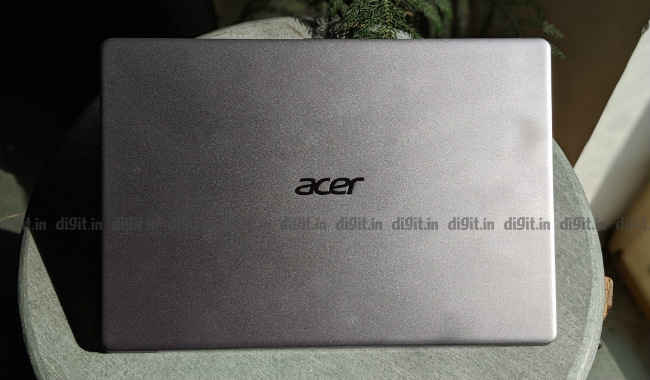
Nice, clean look
The push of one finger is all it takes to open the display all the way from zero to a comfortable 180 degrees. When pushed and pulled with one hand, the display unit reveals little sign of flex. Some flex, however, is observed on the keyboard island when the keys are tapped hard. Bezels around the screen are quite slim and lend the laptop’s display area a contemporary look. While the tiny keys and quick-to-read fingerprint scanner are coloured dark grey, the area around the keyboard matches that of the rest of the laptop’s body.
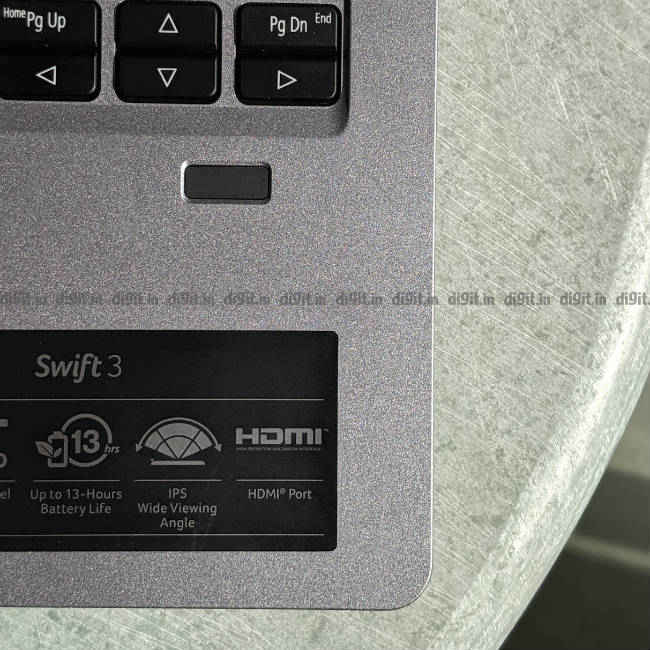
Fingerprint scanner works well
In the one and only silver colour option that the laptop is available in, the Acer Swift 3 ends up looking plain Jane but in a positive way. It’s the laptop equivalent of that quiet, well-maintained mid-size saloon your local GP commutes in. It neither screams excitement nor goes invisible when placed among other models. That said, I wish the Swift 3 came in more colours. It would’ve given the country’s startup community a bit more to choose from.
Display, Audio, and IO
The Swift 3 features a 13.3-inch IPS LCD screen with a Full HD resolution. Content on the non-touchscreen display looks crisp and clear, partly because of the matte, non-glare finish on top. It ensures that documents are perfectly readable even when the laptop is used under bright lights in the office. Maximum viewing angle goes nearly up to 180 degrees both vertically and horizontally. Colours on the display seem to be fairly accurate too, with the backlighting not washing away any of it even at max setting.
According to our test kit, the display is capable of reproducing 95 percent of the colours in the sRGB colour space and 74 percent of the colours in the Adobe RGB colour space, which is not bad for the laptop’s asking price. In comparison, the display on the VivoBook S14 is capable of reproducing 93 percent of the colors in the sRGB colour space and 72 percent of the colours in the Adobe RGB colour space, which isn’t far behind. To sum it up, the crisp, colourful display is easily one of the Swift 3’s best qualities.

95 percent sRGB, 74 percent Adobe RGB
Sound from the laptop’s two down-firing speakers is underwhelming. At maximum, the volume is just about enough to fill a small two-seater office cubicle. Songs like The Weeknd's Starboy sound bland across low, mid, and high frequencies. These speakers are best reserved for error and warning sounds from Windows. Consider getting a proper portable speaker if you care for audio quality from your laptop.
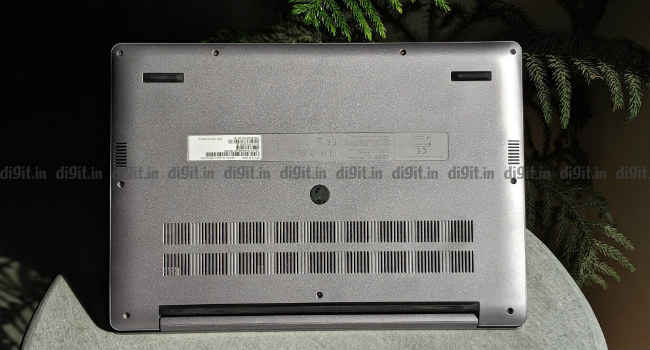
Down-firing speakers are tiny and underwhelming
The Swift 3 comes with a nice array of usable ports on its sides. On the left, we see a proprietary round-pin power port, USB-A 2.0 port, a 3.5mm audio jack for headsets, and a card tray. The tray, which requires a SIM card ejector tool to be accessed, has cut-outs to accommodate a microSD card and a nano SIM card. On the right side, we see a USB-A 3.0 slot that can power a USB device even when the laptop is turned off, a full-size HDMI port, a USB-C 3.0 port, and a Kensington lock slot.
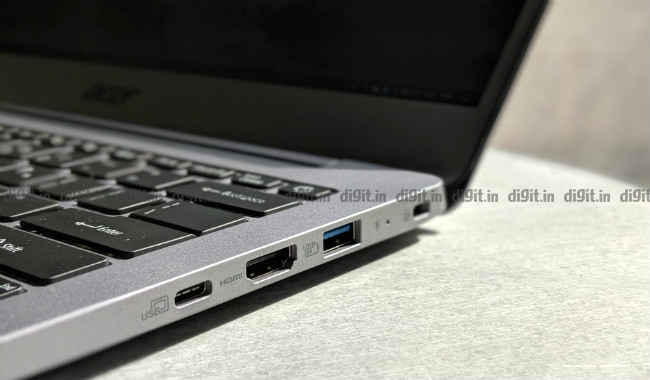
Always-on USB
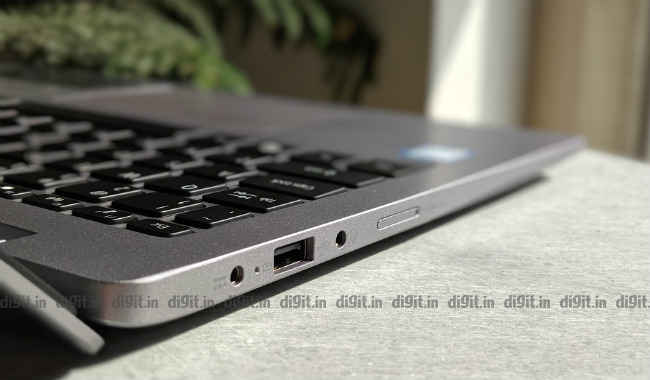
You don't see a SIM tray on a laptop every day
Keyboard and Touchpad
The keyboard is probably the Swift 3’s weakest element. The keycaps are too tiny for a laptop of its size, which leads to frequents mistypes and stress on the fingertips. The cool white backlighting, which does not have levels, turns off after a few seconds if no key is pressed. This can be a constant source of distraction if your eyes are fixed on the screen and you’re trying to focus on the task at hand. I wish the power button weren’t placed adjacent to the Delete key as a press of the wrong key can lead to unintended Sleeps and Hibernates. On the plus side, the keys have a decent amount of travel and resistance.
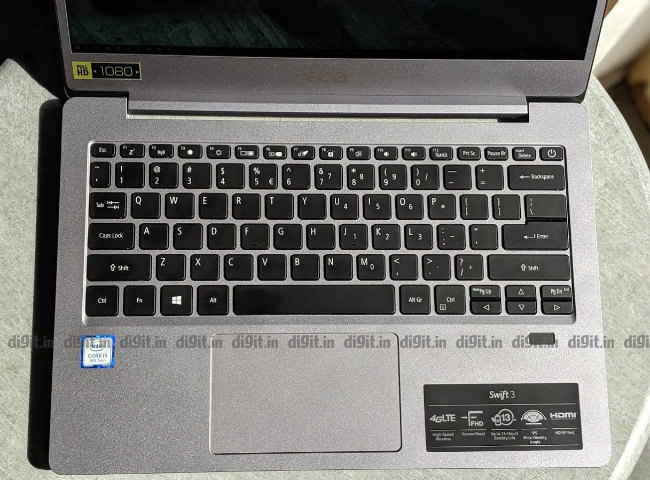
Good precision touchpad
In most laptops, the function keys (F1–F12) can be reprogrammed to work directly or through the combined use of the Fn key using a simple switch function that’s found in the system BIOS. Sadly, this switch on the Swift 3 affects more than just the function keys. It inverts the operation of other dual-function keys, such as Delete/Insert, Home/Page Up, and End/Page Down. While this sort of setup may have been easier for Acer to wire, it ruins the typing experience for power users. This keyboard is not for users who do a lot of typing.
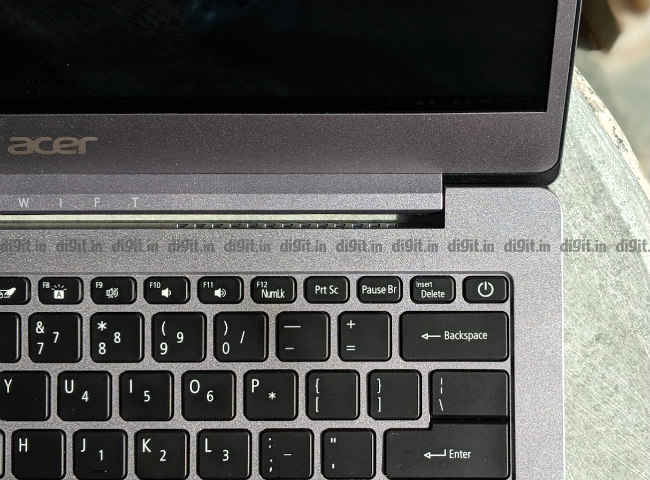
Power button too close to Delete key
The touchpad on the Swift 3 is a precision unit, which means that multi-finger taps and swipes can be performed without installing any third-party drivers or utilities. Windows 10 allows you to reprogramme these functions right within Settings. The two mouse buttons beneath the surface of the touchpad are fairly easy to click. The surface area of the touchpad too is sufficient for everyday use.
Performance and Gaming
The Acer Swift 3 does not come with Intel’s 8th Gen Whiskey Lake refresh of CPUs. Instead, it gets the older Kaby Lake R chips. The review unit was powered by an Intel Core i5-8250U processor with 8GB of DDR4 RAM. Storage was taken care of by a Kingston 25GB PCIe NVMe solid-state drive. Rendering graphics was taken care of by an Intel UHD Graphics 620 internal graphics card. Sadly, 8GB of RAM is all you can get on the Swift 3 as the memory is soldered to the motherboard. There are no extra RAM slots for future upgrades. There’s also no 2.5-inch hard drive caddy in sight, so that rules out the addition of a hard drive.
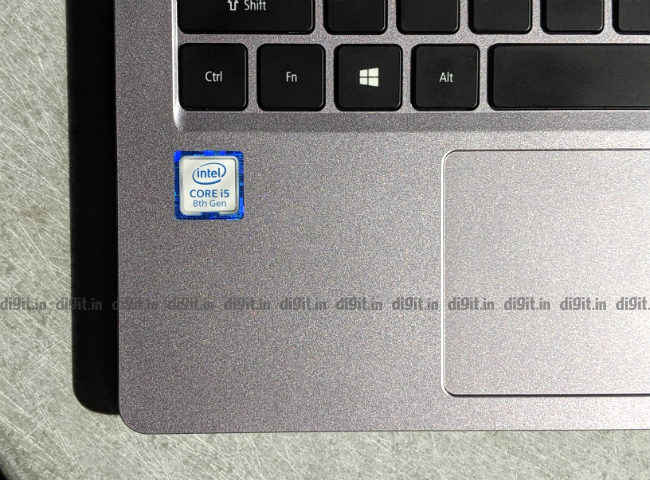
The review unit’s performance in our CPU benchmark tests was underwhelming. On PCMark 8’s Accelerated Creative test, the laptop scored 3371. In comparison, the similarly priced Asus VivoBook S14 scored 4516 on the same test. The costlier Asus ZenBook 13 scored 4457 in the same test. In GPU benchmark tests, the Acer caught up. On 3DMark’s Cloud Gate and Sky Diver, the review unit bagged 3768 and 3582. In comparison, the Asus VivoBook S14 scored 3916 and 3385 in the same two tests respectively. Read more about the VivoBook S14 in our review here.
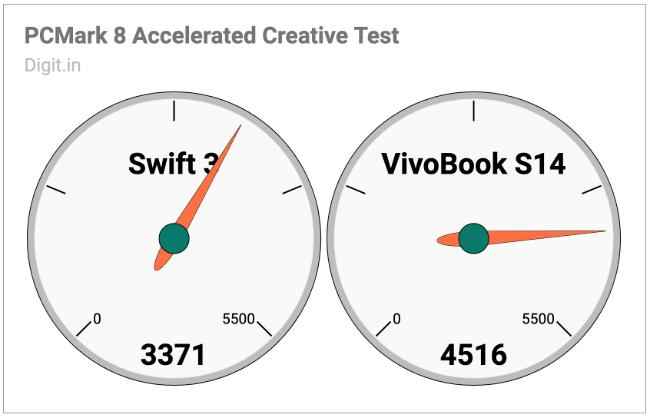
In everyday scenarios, the review unit performed as smoothly as I’d anticipated. I was able to multitask comfortably on applications like Chrome, OneNote, File Explorer, Steam, Word, PowerPoint, and WhatsApp for PC across multiple virtual desktops. I was also able to open scores of tabs on Chrome across multiple instances without worrying about any lag or stuttering. Switching between open windows and desktops too happened without any noticeable lag or twitching. The Swift 3 is good for users aiming to browse, edit documents, work on spreadsheets, and play music and videos.
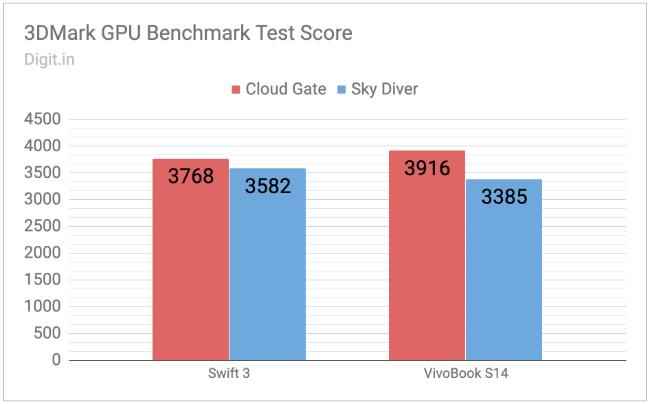
Gaming was understandably a strained experience on the Swift 3. Doom ran on Ultra in Full HD at an average frame rate of 11 frames per second, which was unplayable. Bringing the setting down to Low made the average frame rate jump to 14 and the game more playable. Metro: Last Light ran on Very High in Full HD at an average frame rate of 10 frames per second. At such frame rates, the game was a little more playable than Doom. Turning the setting down to Low made the average frame rate climb to 14 and the game a bit more playable. In summary, the Swift 3 can take on less demanding titles with some effort, such as Ori and the Blind Forest and Portal. But it cannot be considered seriously for playing games.
4G LTE Connectivity
This is one section we don't get a chance to include in most of our laptop reviews. That should give you an idea about how many laptops come with a feature like this. The “-51” variant of the Swift 3 comes with inbuilt 4G LTE connectivity, which, when set up, is meant to liberate the laptop from the Wi-Fi network. Users with an active data plan should in theory be able to use their laptop on the go without depending on hotspot networks or coffee shops that offer free Wi-Fi. In reality, things were a bit different. To start with, we received a unit whose SIM tray had no cut-outs for a nano SIM card. We had to send the unit back to let Acer have it replaced.
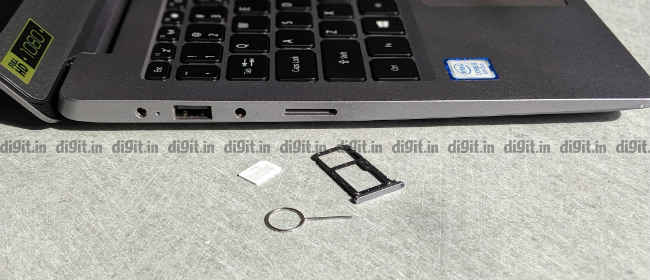
SIM tray doubles as microSD card reader
Our final review unit came with the necessary cut-out for the SIM tray and a bundled international data service called Ubigi. The trial plan included a SIM card that could be used with the laptop. Despite our best efforts, we could not connect to the internet using Ubigi's bundled kit. However, connecting to a local network provider, such as Jio, was fairly easy. It involved popping a regular Jio SIM card in and clicking on the Wi-Fi icon in Windows 10's taskbar. Clicking on the Cellular icon then allowed us to create a new connection profile with the right access point name. Windows 10 automatically registered the connection as a metered one so as to limit data usage. In less than five minutes, we were connected to the internet.

The bundled Ubigi connection that went nowhere
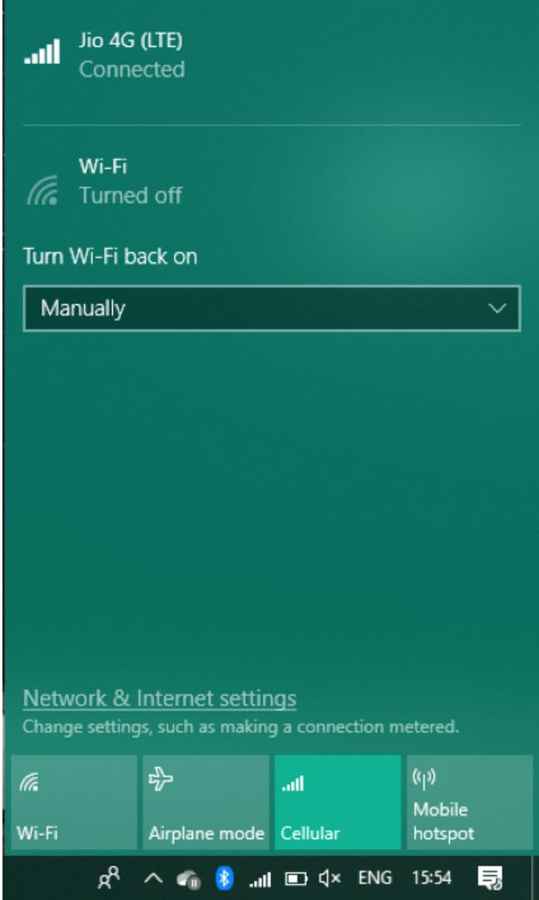
A local Jio connection, however, was up and running in no time
Battery
The Swift 3 ships with a Quad-cell lithium-ion battery with a capacity of 3320mAh. Acer claims that this unit is enough to make the laptop last for up to 12 hours on a single full charge. On our standard battery benchmark test, the review unit lasted 4 hours, 37 minutes, which is quite a decent figure. In comparison, the similarly priced Asus VivoBook S14 that we reviewed a few weeks ago lasted 3 hours, 8 minutes on the same test. The costlier Asus ZenBook 13, on the other hand, scored 5 hours, 20 minutes on the same test.
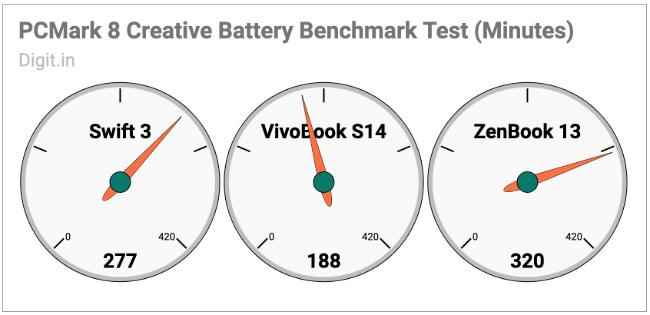
In everyday scenarios, the review unit lost close to 40 percent of its charge in a little over an hour’s time. During the battery test, I was writing, browsing, and playing music through headphones with the Wi-Fi and Bluetooth enabled and the screen set to over 70 percent brightness. On an average, expect the Acer Swift 3 to return no more than four hours on battery power. A full charge usually happens in about one and a half hours. In summary, the Acer Swift 3’s battery life is decent but nowhere close to long.
Bottom Line
In a market that’s cluttered with extremely similar models sold by Asus, HP, Dell, and Lenovo, the thin and light Acer Swift 3 makes a case for itself by offering what others don’t: 4G LTE connectivity. It's what makes the Swift 3 an ideal choice for those who want a laptop that is truly “on the go” without relying on dongles and hotspot networks. Sadly, the bundled Ubigi internet service is a let down as getting it to work is a hassle.
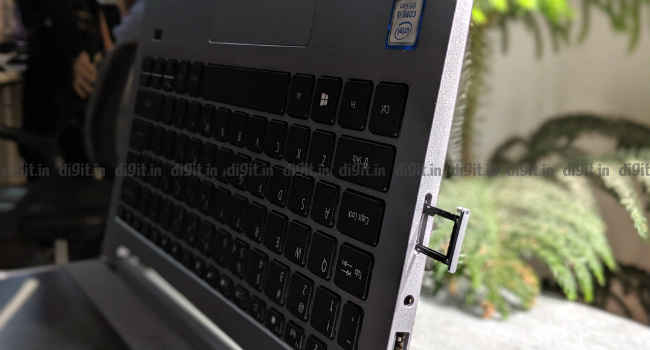
4G capability sets the Acer Swift 3 apart
The Acer Swift 3 is a good laptop even if we don't count its big party trick. Packaged in a clean, classy metal chassis, it features a crisp display that's mostly colour-accurate and free of glare. The Core i5 CPU, though dated now, offers good performance. I only wish it had a more comfortable keyboard, better sound, and upgradeable RAM. It's otherwise a laptop you can't go wrong with.
[ad_2]
Source link

Post a Comment